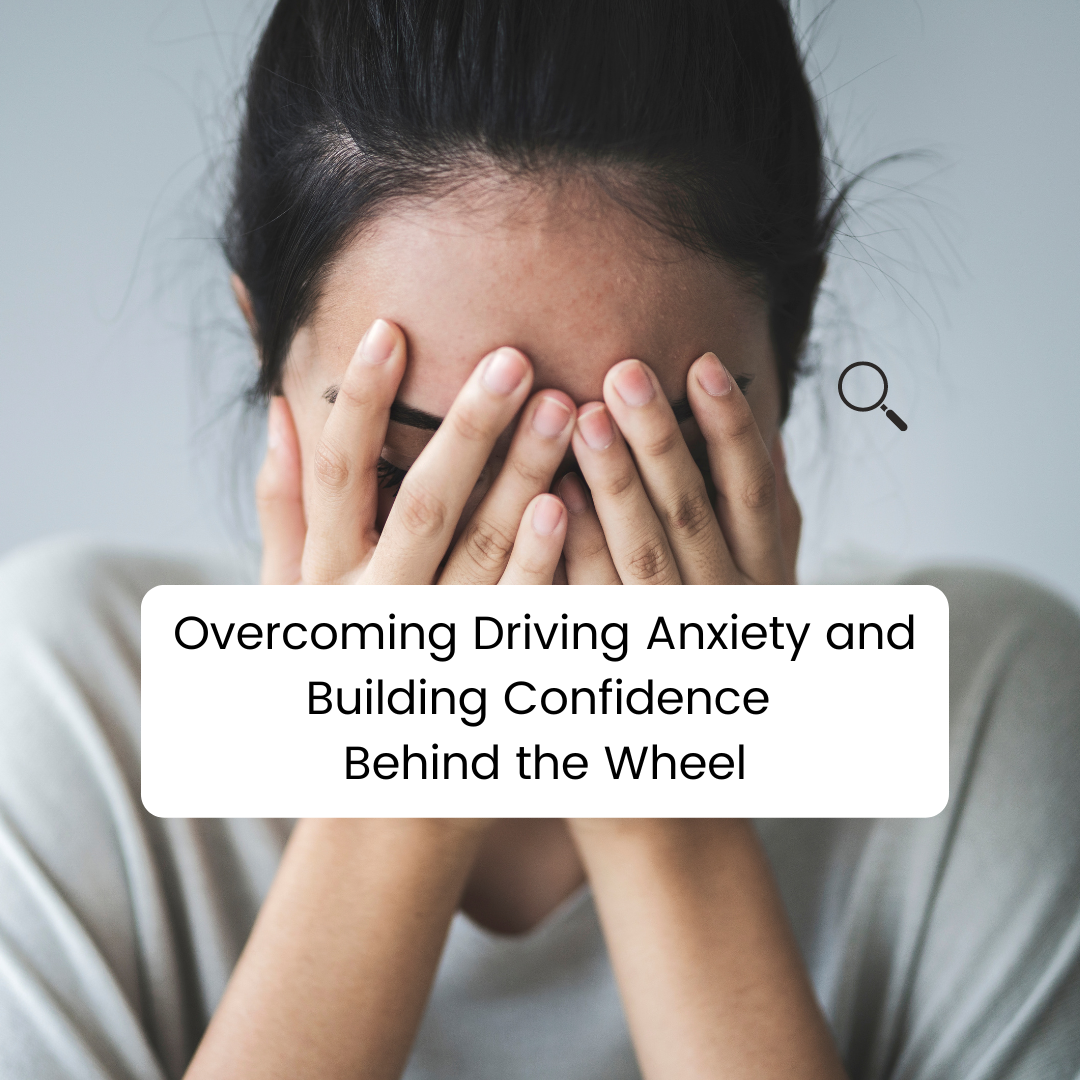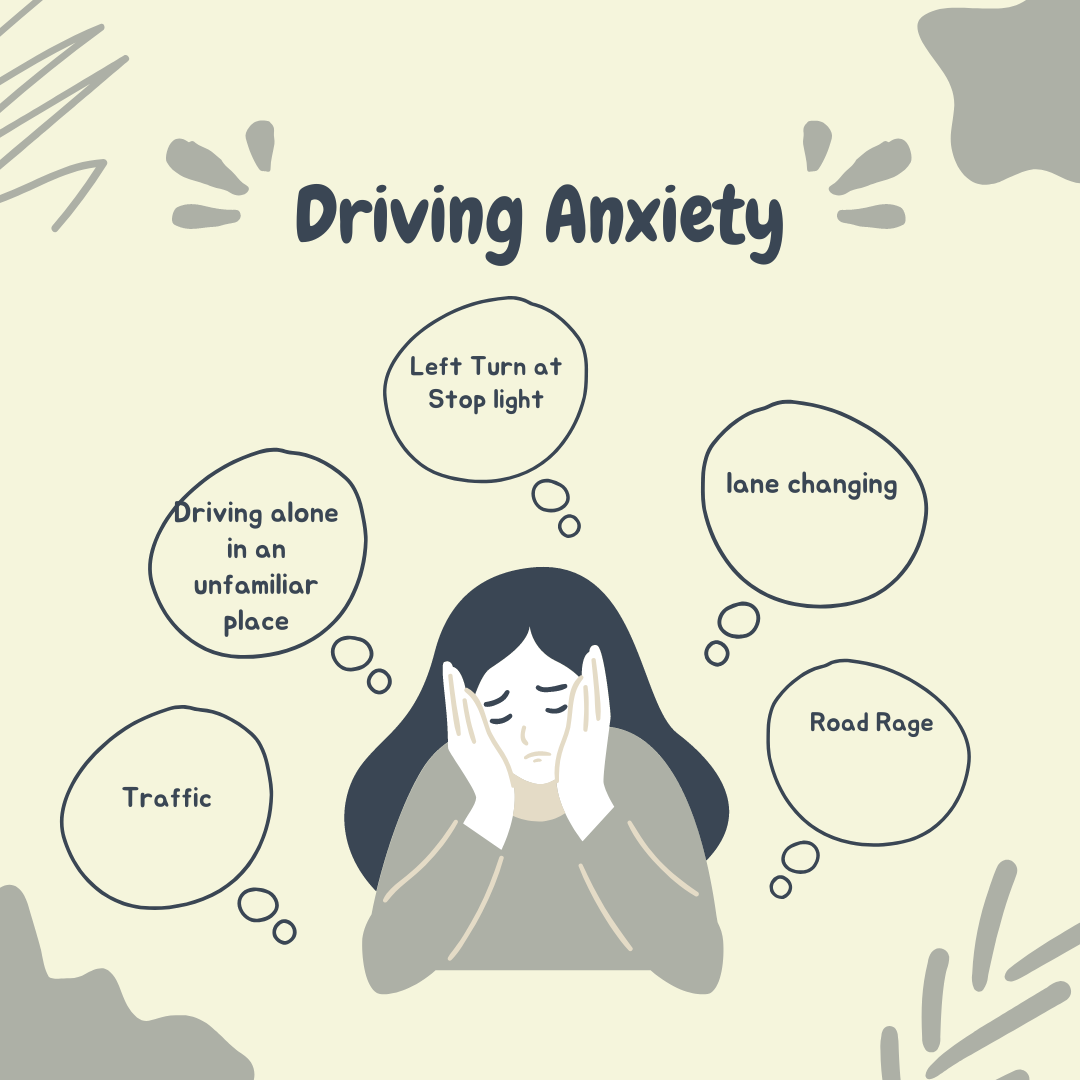Overcoming Driving Anxiety and Building Confidence Behind the Wheel

Driving is a necessary skill in today’s world, allowing us to commute to work, school, or social events. However, for some people, driving can be a source of anxiety, fear, and stress. Driving anxiety is a common condition that affects many individuals, and it can manifest in various ways, such as fear of driving on highways, difficulty with merging or changing lanes, or feeling anxious when driving in bad weather conditions.
Driving anxiety can not only make driving unpleasant and challenging but can also have an impact on a person’s overall quality of life. It can limit one’s ability to travel and engage in social activities, which can lead to feelings of isolation and depression. Moreover, driving anxiety can also lead to unsafe driving behavior, such as avoiding certain routes or situations, which can increase the risk of accidents and injuries.
Understanding Driving Anxiety Driving anxiety can be caused by various factors, such as previous negative driving experiences, fear of accidents, or the perceived pressure of driving in traffic. In some cases, driving anxiety may be linked to underlying mental health conditions, such as generalized anxiety disorder or post-traumatic stress disorder.
The symptoms of driving anxiety can vary from person to person and may include physical symptoms such as sweating, rapid heartbeat, and difficulty breathing. These symptoms can be triggered by specific situations, such as driving on highways or bridges, or can occur more generally while driving.
Driving anxiety can also affect driving behavior, leading to avoidance of certain situations or routes, or overly cautious driving, such as driving significantly below the speed limit or being overly reactive to minor traffic events.
Strategies for Overcoming Driving Anxiety
Fortunately, there are various strategies that can help individuals overcome driving anxiety and improve their driving confidence.
The following are some strategies that can be helpful:
- Exposure therapy Exposure therapy is a type of behavioral therapy that involves gradually exposing an individual to situations that trigger anxiety, in a safe and controlled environment. In the case of driving anxiety, this might involve driving on increasingly challenging roads or in different weather conditions. Exposure therapy is a proven effective treatment for anxiety disorders and can help individuals build confidence and overcome their fears.
- Cognitive-behavioral therapy Cognitive-behavioral therapy (CBT) is a type of talk therapy that can help individuals change their negative thought patterns and behaviors. In the case of driving anxiety, CBT might involve identifying and challenging negative thoughts about driving and replacing them with more positive and realistic ones. CBT can also help individuals develop coping skills and relaxation techniques to manage anxiety symptoms while driving.
- Relaxation techniques Relaxation techniques, such as deep breathing, progressive muscle relaxation, and visualization, can help individuals reduce anxiety symptoms and feel more relaxed behind the wheel. These techniques can be practiced at home or in a safe environment before driving and can be used as needed while driving.
- Positive self-talk Positive self-talk involves using positive and encouraging statements to promote self-confidence and reduce negative thinking. For individuals with driving anxiety, positive self-talk can involve repeating affirmations such as “I am a safe and competent driver,” or “I can handle any driving situation.”
- Seeking support from a driving instructor or therapist Working with a driving instructor or therapist who specializes in driving anxiety can provide additional support and guidance for overcoming driving anxiety. A driving instructor can provide practical tips for improving driving skills, while a therapist can provide emotional support and help individuals develop coping strategies.
- Building Confidence Behind the Wheel In addition to overcoming driving anxiety, it’s important to build confidence behind the wheel. Confidence can help individuals feel more comfortable and in control while driving, which can lead to safer and more enjoyable driving experiences.

Importance of confidence for safe driving Confidence is a crucial component of safe driving. When drivers lack confidence, they may be more prone to making mistakes, reacting poorly to unexpected situations, or avoiding necessary driving maneuvers. Conversely, drivers who are confident behind the wheel are more likely to make safe and effective decisions and react calmly and appropriately to potential hazards.
Tips for building confidence while driving.
The following are some tips that can help individuals build confidence while driving:
- Practice in low-risk environments: Practicing driving in low-risk environments, such as empty parking lots or quiet residential streets, can help individuals gain confidence and improve their driving skills. As they become more comfortable, they can gradually progress to more challenging environments, such as busy streets or highways.
- Set achievable goals: Setting achievable goals, such as driving to a nearby store or taking a short trip, can help individuals build confidence and feel a sense of accomplishment. It’s important to start with small goals and gradually increase the level of difficulty as confidence grows.
- Focus on your strengths: Focusing on one’s strengths, such as good spatial awareness or quick reflexes, can help build confidence and reduce anxiety. By focusing on what one does well, individuals can feel more competent and capable behind the wheel.
- Celebrate small successes: Celebrating small successes, such as successfully merging onto a highway or navigating a complicated intersection, can help individuals build confidence and feel more positive about their driving abilities.
- Take breaks when needed: Taking breaks when feeling overwhelmed or anxious can help individuals manage their anxiety and avoid making mistakes while driving. Taking a short break to stretch or take a few deep breaths can help reduce anxiety and allow individuals to return to driving with renewed focus and confidence.
Conclusion
Driving anxiety can be a challenging and debilitating condition, but it’s possible to overcome it with the right strategies and support. By utilizing techniques such as exposure therapy, cognitive-behavioral therapy, relaxation techniques, positive self-talk, and seeking support from a driving instructor or therapist, individuals can build their confidence and feel more comfortable and safer while driving.
Remember, if you are struggling with driving anxiety, it’s important to seek help and support from Edge Driving School. With the right strategies and support, you can overcome your anxiety and become a more confident and safer driver.
